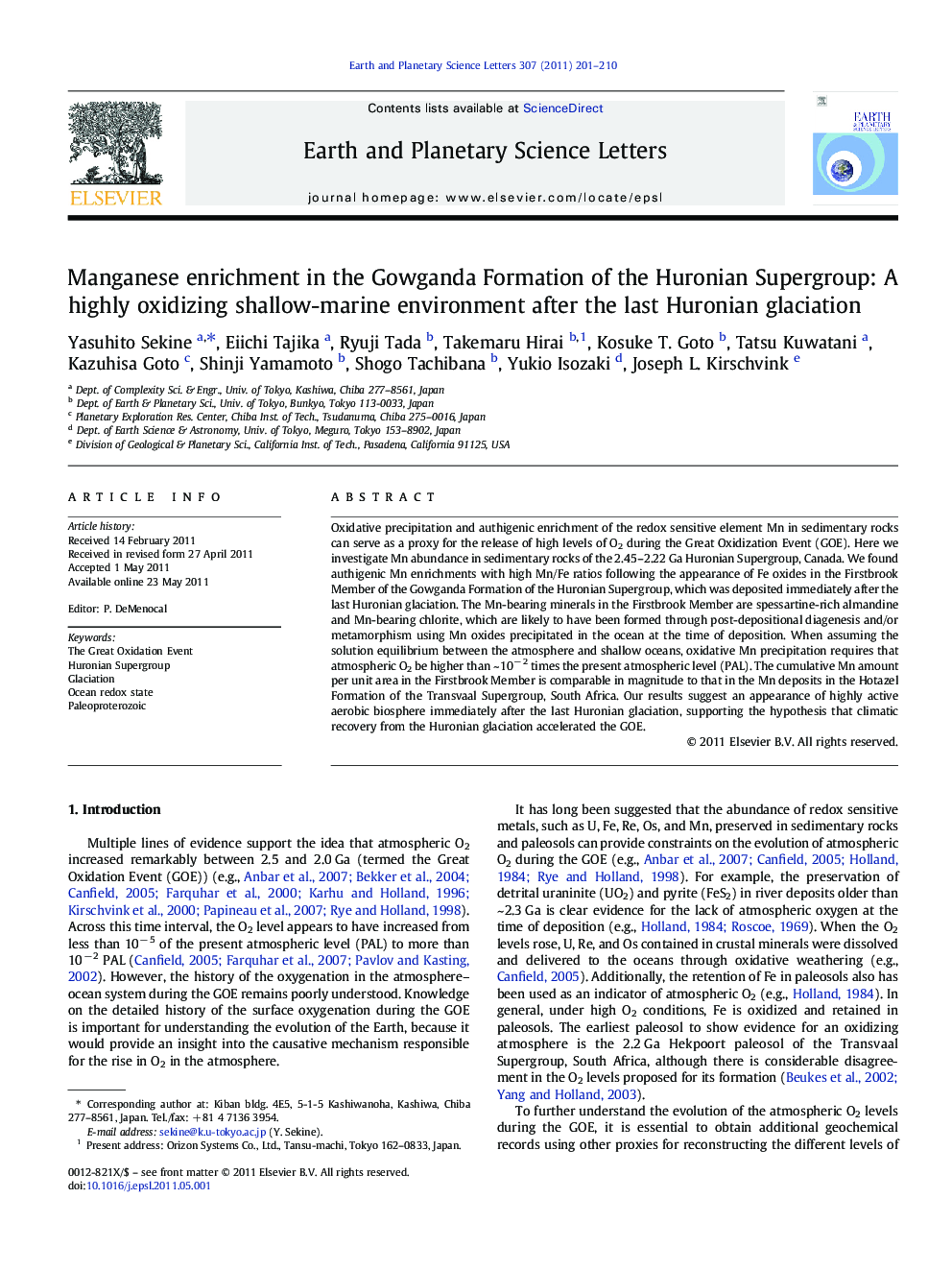| کد مقاله | کد نشریه | سال انتشار | مقاله انگلیسی | نسخه تمام متن |
|---|---|---|---|---|
| 4677995 | 1634826 | 2011 | 10 صفحه PDF | دانلود رایگان |

Oxidative precipitation and authigenic enrichment of the redox sensitive element Mn in sedimentary rocks can serve as a proxy for the release of high levels of O2 during the Great Oxidization Event (GOE). Here we investigate Mn abundance in sedimentary rocks of the 2.45–2.22 Ga Huronian Supergroup, Canada. We found authigenic Mn enrichments with high Mn/Fe ratios following the appearance of Fe oxides in the Firstbrook Member of the Gowganda Formation of the Huronian Supergroup, which was deposited immediately after the last Huronian glaciation. The Mn-bearing minerals in the Firstbrook Member are spessartine-rich almandine and Mn-bearing chlorite, which are likely to have been formed through post-depositional diagenesis and/or metamorphism using Mn oxides precipitated in the ocean at the time of deposition. When assuming the solution equilibrium between the atmosphere and shallow oceans, oxidative Mn precipitation requires that atmospheric O2 be higher than ~ 10− 2 times the present atmospheric level (PAL). The cumulative Mn amount per unit area in the Firstbrook Member is comparable in magnitude to that in the Mn deposits in the Hotazel Formation of the Transvaal Supergroup, South Africa. Our results suggest an appearance of highly active aerobic biosphere immediately after the last Huronian glaciation, supporting the hypothesis that climatic recovery from the Huronian glaciation accelerated the GOE.
Research highlights
► We found Mn enrichment in the Firstbrook Member of the Huronian Supergroup.
► The enrichment would have been caused by precipitation of Mn oxides in the ocean.
► This suggests active aerobic biosphere appeared in the last Huronian deglaciation.
► Climatic recovery from the Huronian glaciations would have accelerated the GOE.
Journal: Earth and Planetary Science Letters - Volume 307, Issues 1–2, 1 July 2011, Pages 201–210